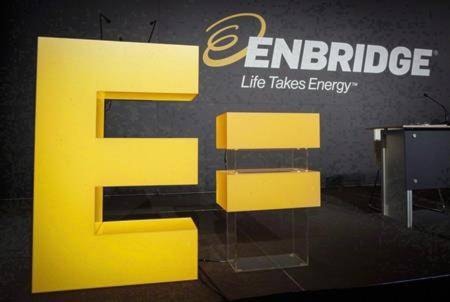CALGARY — Canada’s oilpatch is eagerly anticipating higher prices and profits for western Canadian oil producers after Minnesota regulators approved Calgary-based Enbridge Inc.’s $9-billion project to upgrade its deteriorating Line 3 pipeline through the state.
The pipeline will add about 375,000 barrels per day of export capacity into the United States when it comes on stream in late 2019 or early 2020, a boost that is expected to help relieve a pipeline bottleneck that has swollen the discount on Canadian heavy oil versus U.S. benchmarks this year.
“From our perspective this was the best news that the Canadian oil and gas industry has received for a long time,” said analysts at Desjardins Capital Markets in an overnight report to investors.
“This is a crucial piece of infrastructure to help debottleneck Enbridge’s existing egress capacity out of Western Canada and should allow for heavy oil differentials to tighten in 2020,” agreed analyst Ian Gillies of GMP FirstEnergy Capital.
Investors were also impressed. Enbridge’s stock price had surged to $47.08, up about seven per cent, in afternoon trading on The Toronto Stock Exchange on Friday.
Construction of the pipeline is crucial to ensure access to the U.S. Midwest, which imported 2.3 million barrels per day of Canadian crude in 2017, said Nancy Berard-Brown, manager of oil markets and transportation for the Canadian Association of Petroleum Producers.
“The Enbridge mainline, of which Line 3 is a major backbone component, has served as the principal route for exports of Canadian crude oil to U.S. markets for decades,” she said.
“Increased transportation capacity in all directions is needed to reach more Canadians and new, growing markets to ensure Canada remains globally competitive.”
The Minnesota approvals remove a negative overhang on Enbridge’s business plan as the project is the largest part of its $22-billion capital growth program over the next two years, analysts said.
Enbridge has pegged the cost of the Canadian segment of Line 3 at $5.3 billion, with an additional $3.8 billion budgeted for the U.S. segment. It has spent $3.6 billion to date on the overall project.
The company estimates the pipeline will be in service in the second half of 2019, although analysts cautioned it may take until the first quarter of 2020 if substantial civil disobedience delays construction.
“We are taking potential delays during the construction process resulting from criminal protesters into consideration (similar to what occurred during the Dakota Access pipeline construction),” said Gillies.
Opponents have threatened a repeat of the 2016-17 protests on the Standing Rock Reservation in North Dakota against the Dakota Access pipeline, in which Enbridge owns a stake. Those protests drew thousands of opponents and there were more than 700 arrests.
Enbridge has 60 days under the Minnesota Public Utilities Commission (PUC) approval to negotiate a settlement with the Fond Du Lac Band to determine routing on a short piece of the pipeline that crosses its land, but it will be able to go around if no agreement can be reached.
“The PUC’s decision to approve our preferred route with modifications is a good outcome for Minnesota and the result of listening carefully to stakeholders and an effective consultation process,” Enbridge CEO Al Monaco said in a statement.
He added replacing Line 3 ensures the safe continued operation of the line that is needed to supply Minnesota and area refineries.
